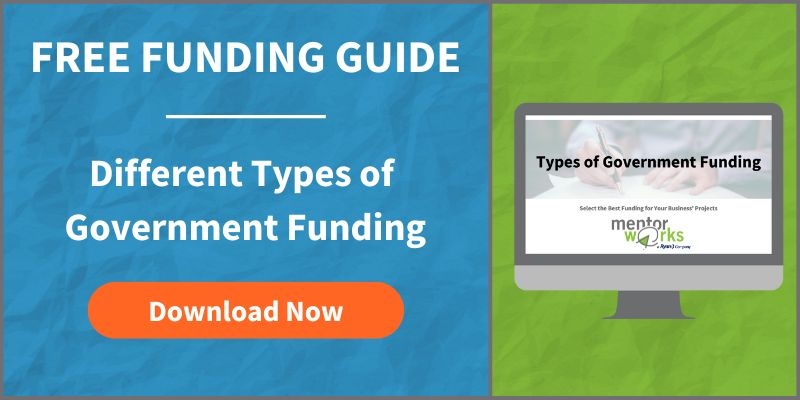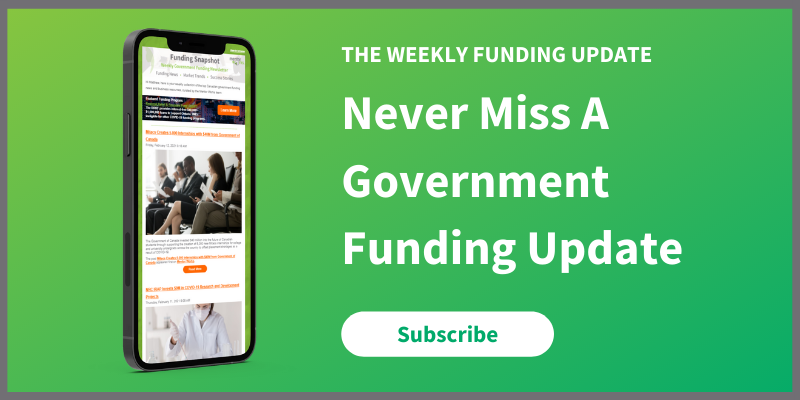Top 5 Government Funding Myths

For many businesses, diving into the topic of Canadian government funding for the first time can seem like an overwhelming task. Don’t worry; it’s not. The topic is filled with several misconceptions that can derail a business’ interest in accessing government funding. We’re here to clear things up for you and set you up for government funding success. Here are the top five misconceptions related to Canadian business funding and what businesses should consider instead.
Myth #1: Government Funding is Earmarked for Pre-Selected Businesses
Misconception: Funding programs are pre-assigned to companies before they launch.
This is a common misconception that drives businesses away from learning about the government funding opportunities available to them. There is a thought that when a funding program launches, specific companies are chosen, or “ear-marked,” during the inception of that program.
The truth is, the wide majority of funding is available to any business that meets the eligibility criteria and submits a competitive application. It’s up to those eligible companies to follow the application process to receive the funding reimbursement. If your business researches the government incentives that are out there, applies, and follows through on the agreed-upon funded initiative, it opens up an entire new cash flow avenue to support your growth initiatives. Every eligible business has the opportunity to obtain funding; it’s the ones that spend the time to research and apply (or partner with someone like Mentor Works to help them) that reap the benefits.
Myth #2: I Can Get Funding for General Operational Expenses
Misconception: Government funding is given to businesses for general operating expenses.
The truth is, the large majority of small business funding programs are based on supporting projects with specific objectives. Some popular funding purposes include hiring, training, tech adoption, and export expansion. This means that in order for businesses to get funded, they need to invest cash and resources into these activities and the government will support a percentage of the related costs.
Small business grants and incentives need to target a specific industry or economic challenge. As part of the application process, the applicant will outline the project activities, timelines, impacts, and expenses, tying each of these back to the program’s objective. This approach to government funding ensures that taxpayers’ money is going towards investments that have as much impact on the economy as possible. Funding awardees also need to report on their project expenses and activities to prove that their project and its results were fully realized by the business.
*There is an exception to this in extraordinary circumstances: COVID-19 Funding exists to help businesses affected by the pandemic maintain operations, such as the Canada Emergency Wage Subsidy and FedDev Ontario’s Regional Relief and Recovery Fund (RRRF).
Myth #3: Business Grants Are Always Better Than Repayable Funding
Misconception: Grants that businesses don’t have to pay back to the government are more impactful than repayable no/low-interest funding.
At a quick glance, it’s easy to assume that grant funding, which are incentives you don’t have to pay back, are a better option than repayable funding, which act similarly to loans paid back to the lender over time. Yet, repayable funding is often awarded to businesses in larger amounts and if you compare these large cash disbursements to traditional bank loans, the interest rate savings can outweigh a smaller grant award.
Let’s compare a $100,000 non-repayable grant with a $2,000,000 repayable funding allotment, paid back monthly over 10 years. The business needing the $2,000,000 in cash is awarded the repayable funding and would save a total of $214,941.66 in interest costs. That’s an additional $214,941.66 to their bottom line, whereas grant funding is taxed as business income. It’s also important to note that government funding agencies will often customize the repayment plan of repayable funding to align with the business’ growth trajectory, allowing for additional flexibility, so don’t discount a repayable funding program based on its funding type.
Myth #4: The Government Will Share My Private Information
Misconception: In order to access government funding, I must sacrifice my privacy and expose application information to the general public.
Government funding applications require applicants to provide financial and strategic details in order to vet the quality of the applicant. All of the information you provide to the government is protected under the Access to Information Act and the Privacy Act.
The Privacy Act is what really protects you. In Section 20(1)(b) – Confidential Information Supplied by a Third Party it states that “Subject to this section, the head of a government institution shall refuse to disclose any record requested under this Act that contains (b) financial, commercial, scientific or technical information that is confidential information supplied to a government institution by a third party and is treated consistently in a confidential manner by the third party.”
While sensitive business information will not be shared, there are certain Canadian business funding programs that will request to release the funding applicant’s name, project name, cost of project, and awarded funding, however this varies with each program and will be detailed in the funding contribution agreement.
The government funding entity will always be upfront on what, if any, high-level information might be shared related to the funded project or applicant and the applicant needs to sign the funding contribution agreement in order to allow this.
Myth #5: Most Grants Give Funding for Past Activities
Misconception: Businesses can access most government funding programs for activities they’ve already completed.
While it’s true that tax incentives and credits exist to cover retroactive costs, the majority of government grants and repayable funding requires careful planning. The applicant must apply for funding to support their upcoming project and expenses and sign a contribution agreement with the funding agency prior to commencing the funded project. Any project activities and expenses made before signing the agreement are often deemed ineligible.
This is why it’s so important to build a Proactive Funding Plan. Gather your business’ key strategic leaders to outline upcoming projects and expenses for the next 12-24 months. This will help you align those growth activities with their relevant government funding categories.
You can stay informed of new and updated government funding opportunities to support these activities by subscribing to the Weekly Funding Newsletter, tuning into an upcoming Funding Webinar, or contacting a Mentor Works team member directly. Building a funding plan will take some forethought and strategic planning, but the payoffs can be a game-changer for your business’ growth trajectory, allowing you to punch above your weight class and outperform your competition.


